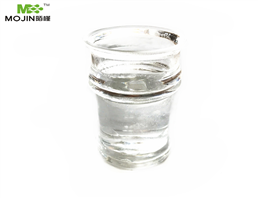
2,6-Dichlorobenzyl acetonitrile NEW
| Price | Get Latest Price |
| Package | 25KG |
| Min. Order: | 1KG |
| Supply Ability: | 50000KG/month |
| Update Time: | 2023-07-05 |
Product Details
| Product Name: 2,6-Dichlorobenzyl acetonitrile | CAS No.: 3215-64-3 |
| Min. Order: 1KG | Purity: 99% |
| Supply Ability: 50000KG/month | Release date: 2023/07/05 |
| Product Name: | 2,6-Dichlorobenzyl acetonitrile |
| Synonyms: | 2,6-DICHLOROPHENYLACETONITRILE;2,6-DICHLOROBENZYL CYANIDE;2,6-dichlorobenzyl acetonitrile;2,6-Dichlorobenzeneacetonitrile;Acetonitrile, (2,6-dichlorophenyl)-;2,6-Dichlorophenylacetic acid nitrile;2 6-DICHLOROBENZYL CYANIDE 99% (GC);2,6-DICHLOROPHENYLACETONTRILE |
| CAS: | 3215-64-3 |
| MF: | C8H5Cl2N |
| MW: | 186.04 |
| EINECS: | 221-730-8 |
| Product Categories: | FINE Chemical & INTERMEDIATES;Aromatic Nitriles;Nitrile |
| Mol File: | 3215-64-3.mol |
 | |
Product picture

Packing &shipping&Payment
Shipping:by sea or by air
Payment:T/T,western union,moneygram
Packaging Details drum
Port:Tianjin
Lead Time :
| Quantity(Kilograms) | 1 - 10000 | >10000 |
| Est. Time(days) | 5 | To be negotiated |

 Company information
Company information
Hebei Mojin Biotechnology Co., Ltd, Our company is a professional in 4'-Methylacetophenone,Levamisole hydrochloride ,N-Methylformamide and other chemical reagents research and development production enterprises. Our business covers more than 30 countries, most of the big customers come from Europe, America and other countries in the world, we can guarantee the quality and price. In recent decades, with the efforts of all employees, we have established many cooperative companies in shandong, henan, guangdong and other places. Our corporate purpose is based on the market, enhance the strength, take the road of scientific and environmental sustainable development, relying on the country. Technology r & d center, increase the investment in r & d, based on the domestic market, expand the international market, manufacturing quality products, sincere service to the society, into a modern, ecological, scientific and technological enterprise world.
 Advantage
Advantage
In stock

Company Profile Introduction
You may like
Recommended supplier
| Product name | Price | Suppliers | Update time | |
|---|---|---|---|---|
| $0.00/1KG |
VIP6Y
|
Hebei Weibang Biotechnology Co., Ltd
|
2024-11-08 | |
| $1.00/1KG |
VIP6Y
|
Shaanxi Dideu Medichem Co. Ltd
|
2024-07-10 | |
| $10.00/1kg |
VIP1Y
|
Shandong Deshang Chemical Co., Ltd.
|
2024-06-14 | |
| $100.00/1kg |
Ouhuang Engineering Materials (Hubei) Co., Ltd
|
2024-04-25 | ||
| $1.00/1KG |
VIP6Y
|
Career Henan Chemical Co
|
2019-12-30 |
- Since: 2017-12-08
- Address: Building A, Enjoy city, Zhongshan East Road, Shijiazhuang city, Hebei province
13288715578
sales@hbmojin.com











 Japan
Japan